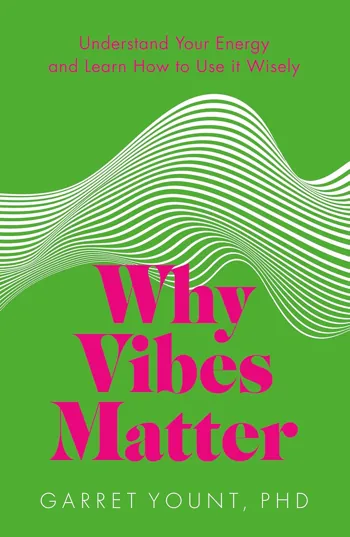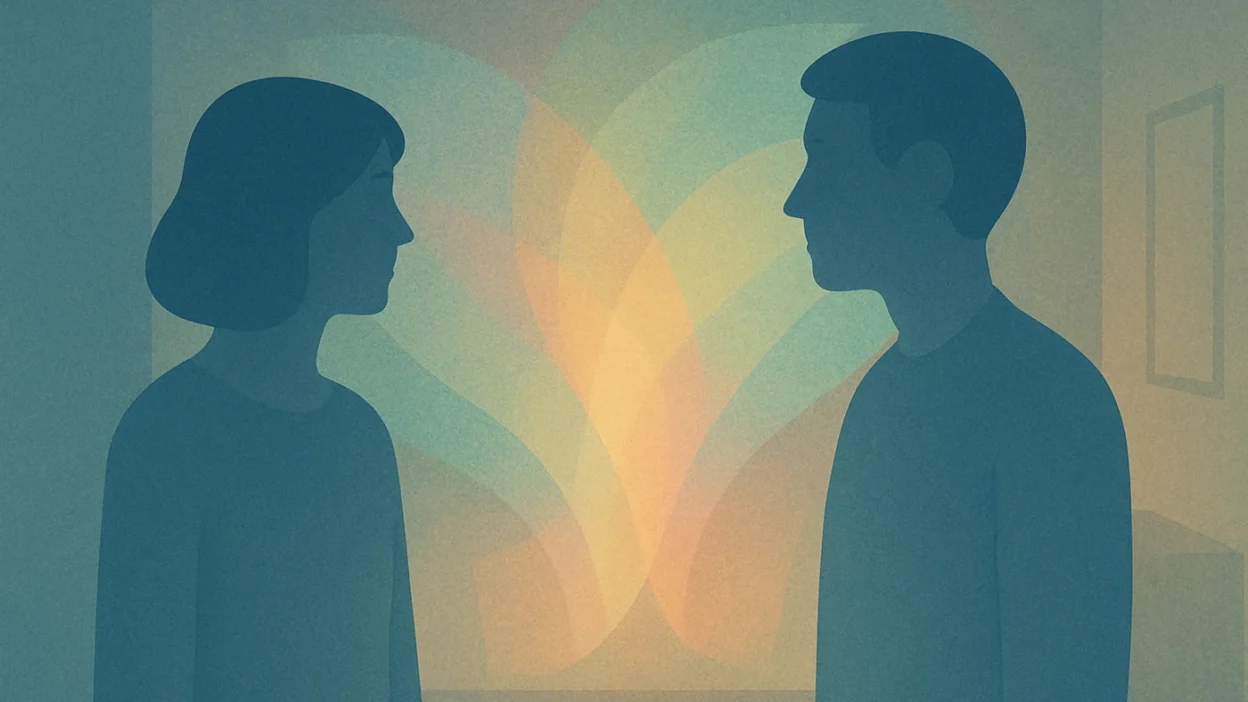Sometimes we sense a change before we can explain it. A conversation feels charged, a space suddenly still, or someone’s presence makes the air feel lighter. It’s a quiet awareness that something beneath the surface is influencing us, even if we can’t define it.

In Why Vibes Matter, Garret Yount invites us to treat those felt experiences not as mystical fluff but as real phenomena worth examining.
What if “vibes” are more than poetic metaphor—what if they are measurable, influence-bearing aspects of our daily life?
From intuition to inquiry: What is a “vibe”?
Yount, a molecular neurobiologist and researcher at the Institute of Noetic Sciences (IONS), opens by acknowledging that most of us experience vibes, even if we rarely articulate them.
He argues that these subtle energies emerge in the liminal space between physiology, environment, and consciousness.
At its core, Why Vibes Matter explores three intertwined threads
Origin: How do vibes arise?
Yount surveys research on electromagnetic fields of the body (especially heart–brain interactions), biophotons, and even quantum-like theories of energetic interaction.
He cites studies suggesting that a person’s emotional or physiological state correlates with measurable electromagnetic signatures, and that those signatures may, under certain conditions, influence or “entrain” others.
Perception & influence: Why do we feel vibes, and how do they affect us?
He walks us through how shifts in “ambient energy” or interpersonal fields can influence mood, decision-making, and even resilience.
He draws on empirical and anecdotal evidence to suggest that we’re more permeable to external “energy fields” than conventional models often allow.
Attunement & shaping: Can we calibrate or radiate more beneficial energy?
Yount offers practical techniques like meditative tuning, environmental hygiene, and mindful presence, to become more attuned to our own vibes, and to influence the vibes we project outward.
He devotes passages to exploring phenomena like haunted places, the energy around objects, and collective resonance. Even there, though, he suggests grounding with what can be measured, rather than drifting into pure mysticism.
Why this matters
When we think about energy, most of us picture something measurable; the kind that powers devices, lights, or movement.
But personal energy feels different. Some days everything seems to flow with ease, while on others, even simple tasks feel heavier than they should.
We usually write that off as mood or motivation, yet Garret Yount invites us to consider another layer.
What if the shifts we feel aren’t just emotional or psychological, but part of something real and interactive, a subtle exchange of energy shaping our daily experience?
Rerouting consciousness through subtle energy
In a culture that leans hyper-rational, Why Vibes Matter is a travelogue into the liminal.
Yount doesn’t ask you to surrender critical thinking, he argues for a science that accounts for what we habitually dismiss as “just feelings”. He’s part of a broader movement (e.g., noetic science, consciousness research) pushing back on the divide between “hard” and “soft” ways of knowing.
For those of us building a life around performance, creativity, or well-being, I see three useful tensions to hold:
Skepticism and openness in balance. Just because something feels intangible doesn’t mean it’s false, but we should test rather than abandon our standards of evidence. I have always been an open minded person when it comes to high strangeness or unexplained phenomena.
Attuning is training. Just like muscle memory in a runner’s stride or cadence, we can become more sensitive to energy shifts in ourselves and our environment, with practice. I have been working hard to pay more attention to this.
The ripple effect matters. If vibes are real in relation, then every person we interact with, space we occupy, and choice we make contributes to a “vibe ecosystem.” That idea shifts responsibility outward, how might we cultivate more life-affirming vibes in the spaces we enter?
When the unseen becomes part of the path
After reading Why Vibes Matter, I find myself pausing more often, focusing my mind, and to simply ‘feel’ my surroundings: “What is the energy here? Am I contributing or draining?”.
When I move through familiar parts of my day and suddenly feel resistance, like a conversation that doesn’t flow, a random energy slump, or a task that feels harder than usual, I start to wonder if it’s not the situation that’s changed, but the energy I’ve brought into it.
Maybe the tension, fatigue, or impatience we carry quietly shapes how the world meets us in return.
Yount’s book invites us into a quieter field of awareness, one that sits beside our metrics and physiology, not in opposition.
Even if you remain skeptical about electromagnetic fields or quantum models, there’s value in cultivating sensitivity to the invisible texture of experience.
So I’ll leave you with this: the next time you walk into a room, set out on a run, or meet someone new, just pause and sense the vibe.
See what it asks of you, because sometimes the most meaningful changes begin not with what you do outwardly, but with the energy you bring inwardly.



